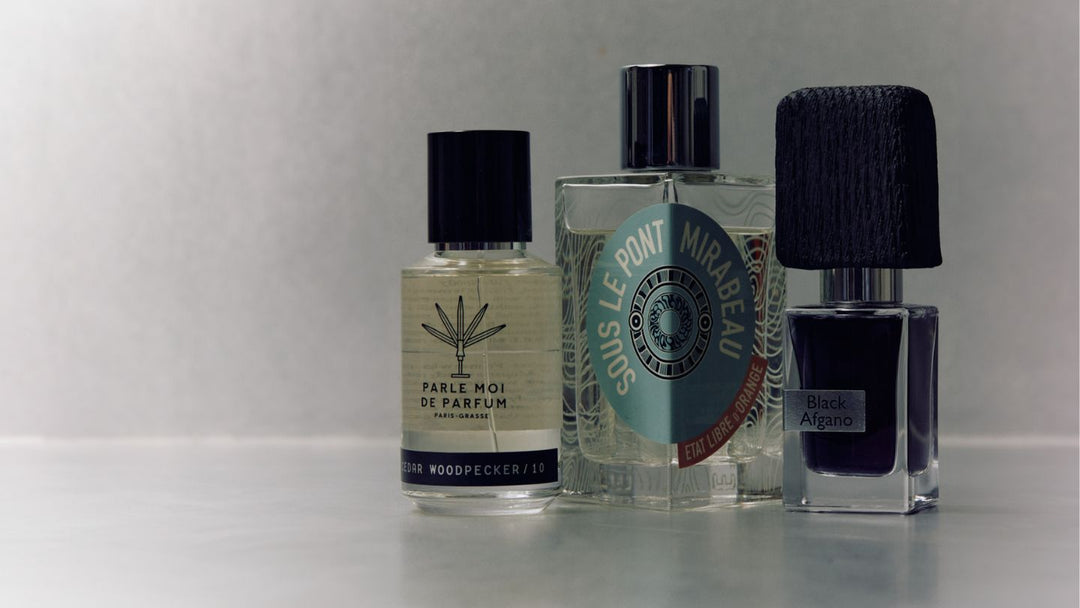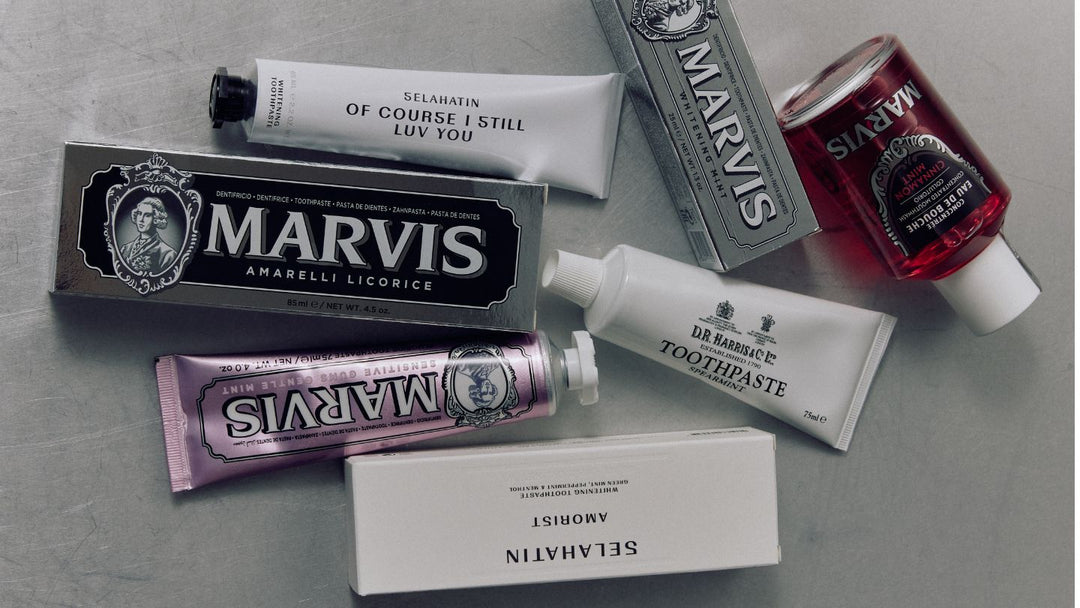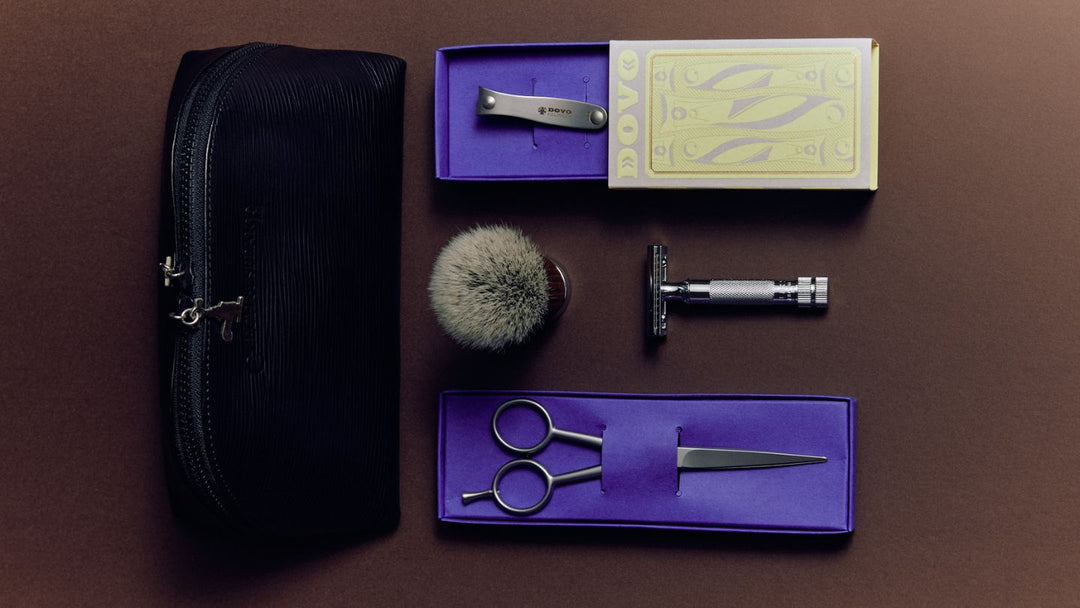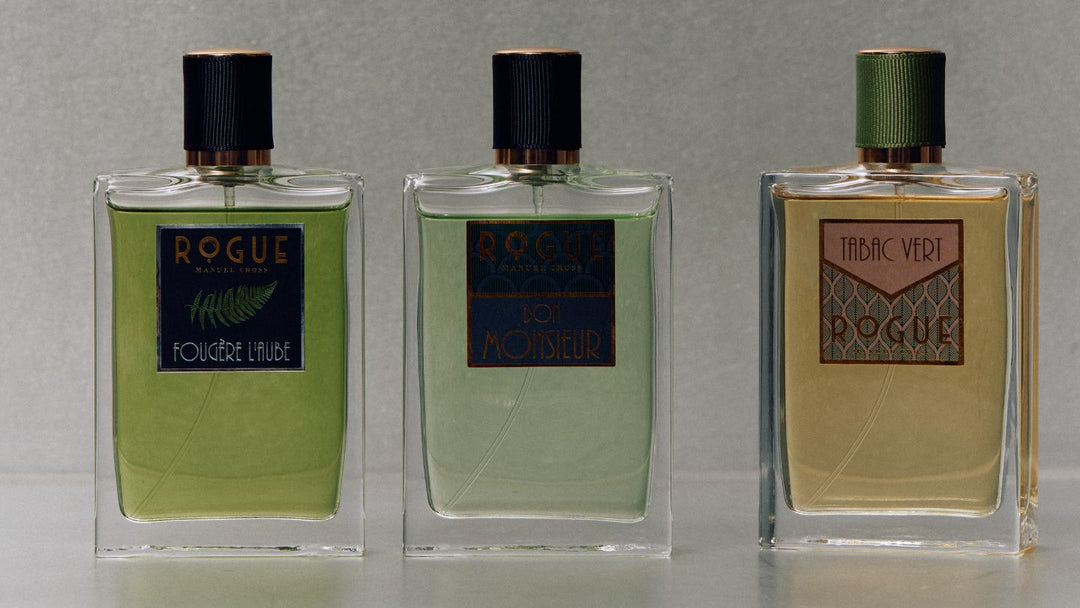The Men's Grooming Glossary
Grooming isn't rocket science, but it's helpful to know your sebum from your serum when choosing which products to get. We've put together an A-Z list of some of the most commonly used terms and ingredients in the men's grooming-sphere.

A:
Acne
A common skin condition usually characterised by pimples, spots or blemishes on the face, chest or back. The most common cause of acne is a buildup of oil, dead skin cells or the presence of bacteria deep within the pores of the skin.
Aldehydes
Used in perfumery, aldehydes are better known for their effect rather than their smell. When blended well, they give a sense of space to a perfume, making it sparkling, bright and uplifting.
Alpha Hydroxy Acids (AHAs)
Naturally occuring or synthetic compounds that are widely used in both men’s and women’s skincare products for their exfoliating properties. With continued use, they may reduce the visible signs of aging and improve the general look and feel of the skin. Glycolic acid and lactic acid are perhaps the most commonly used and well-known members of the AHA family.
Antioxidants
A group of natural and synthetic chemicals, such as vitamin A, C or E, that fight off free radicals (molecules that cause damage to the skin) and environmental aggressors. Lecithin, tocopherol, and citric acid are some of the most common antioxidants.
Astringent
A chemical substance used to shrink or contract the pores, keeping excess oil production to a minimum. Especially suited to oily skin types.
B:
Base Note
Refers to the component of a fragrance or perfume that is the most long-lasting. The base notes of a fragrance will remain long after the top and middle notes have evaporated. Sometimes called the soul notes.
Beta Hydroxy Acids (BHAs)
BHA will appear as Salicylic Acid towards the middle or bottom of an ingredients list – commonly found in products targeted at treating acne or breakouts.
C:
Collagen
The main protein that supports the structure of the skin (and almost everything else from organs to ligaments). Collagen production slows down with age, which is what causes wrinkles and loose, sagging skin.
Comedone
Technical term for a blackhead.
Cuticle
The soft skin that forms at the base of a fingernail or toenail, where the skin and nail meet.
D:
Dermis
The layer of skin directly beneath the epidermis. Contains the hair follicles, sweat glands, sebaceous glands, apocrine glands and blood vessels.
E:
Eau de Cologne
Typically contains 2% - 5% perfume oil and will last around 3 hours.
Eau de Parfum
Uses 8% - 20% perfume oil and can last around 5 hours (often longer depending on concentration).
Eau de Toilette
Contains 4%- 10% perfume oil and lasts an average of 3-4 hours.
Epidermis
The outermost layer of the skin.
Exfoliant
Removes dead cells from the surface of the skin.
F:
Free Radicals
While the chemistry behind it is beyond the scope of this guide, the most important thing to note is that free radicals cause damage to your skin. Sun exposure, stress, poor nutrition and smoking can all lead to increased free radical formation (which is why these activities are considered bad for your skin). Unfortunately, free radicals are part of everyday life and there is no way of escaping their negative effects completely. They can, however, be fought off with antioxidants.
G:
Glycolic Acid
One of the most commonly used alpha hydroxy acids (AHA's). Usually manufactured from sugarcane.
H:
Hangnail
A small, loose strip of torn skin near the base of a fingernail or toenail.
Humectant Moisturiser
A moisturiser that absorbs into the skin to promote moisture retention. Suited to oily skin types.
Hyaluronic Acid
The naturally occurring acid is what plumps and hydrates our skin. The bodies supply decreases with age, so it can be topically applied through serums and moisturisers.
Hypoallergenic
A product that is less likely to provoke an allergic reaction in an allergy sufferer. Products marked as hypoallergenic are more suitable for use by those with sensitive skin.
M:
Middle Note
Refers to the component of a fragrance or perfume that appears shortly after the top note has faded, yet before the base note develops. This is the core of the composition, and is the dominant theme of the fragrance. Also called the heart notes.
N:
Non-Comedogenic
Used to describe a product that will not clog the pores (you’ll often see it as a label on moisturisers, creams or body lotions). If you are prone to acne, or have oily skin, then it’s probably a good idea to stick to products that are marked as non-comedogenic.
O:
Occlusive Moisturiser
A moisturiser that deposits oil or silicone on the surface of the skin to prevent moisture from evaporating. Suited to dry skin types.
Organic [Certified]
With no legal guidelines enforced, anyone could add the word ‘organic’ to their packaging, regardless of what's inside. Play it safe and choose products labelled as ‘Certified Organic’, which have undergone testing and approval by a third-party certifier.
P:
Parabens
A group of chemicals that act as preservatives to stop products growing bacteria or mould. You’ll usually see them listed as butyl-, ethyl-, isobutyl-, methyl- or propyl-paraben.
Peptides
A chain of amino acids (the building blocks of protein) that are essential to human life. They function as messengers in the skin, allowing the epidermis and dermis to communicate more efficiently. As we age, communication diminishes within the skin resulting in fine lines, wrinkles and loss of elasticity. Peptides improve cell communication by sending specific signals that affect the skin's response.
pH
A measure of the acidity or alkalinity of a solution. A pH of 7 indicates neutrality (pure water). Solutions with pH values lower than 7 are considered acidic, while those with pH values higher than 7 are basic.
Pomade
A product used to style the hair.
Pore
A very small opening in the surface of the skin that secretes sweat or oil.
R:
Retinol
One of anti-ageing's most famous fighters, Retinol (Vitamin A) works to restore skin cells to their younger self; improving firmness, fine lines, wrinkles, skin tone and acne.
S:
Salicylic Acid
A chemical compound often used to treat acne, dandruff, callouses or warts. Also known as beta hydroxy acid (BHA).
Sebum
The oil your skin produces.
Serum
A concentrated liquid pumped with active ingredients, penetrating deeper into your skin to treat specific skin conditions, such as pigmentation, ageing or dry skin.
Sillage
The term used to describe the trail a scent leaves (in other words; how well it projects).
Stratum Corneum
The outermost layer of the epidermis.
Sulphates
Commonly known as Sodium Laureth Sulphate (SLES), Sodium Lauryl Sulfate (SLS) or Ammonium Laureth Sulphate (ALS), sulphates are surfactants that provide you with that thick, foamy lather in shampoo, shave cream, body washes, soaps and toothpaste.
Sun Protection Factor (SPF)
A measure of the effectiveness of a sunscreen. The higher the SPF, the better the protection against UVA and UVB radiation. Choose a sunscreen with an SPF rating of at least 15.
T:
T-Zone
Refers to the part of the face consisting of the forehead, nose, chin and space between the brows. It is a particularly oily area of the face, named the T-zone because it's shaped like the letter 'T'.
Top Note
Refers to the component of a fragrance or perfume that appears straight out of the bottle. The top notes of a fragrance evaporate quickly and usually only last around 10-20 minutes. Also known as head notes.
U:
UVA/UVB
The different frequencies of ultraviolet rays. UVA is responsible for long term skin damage, such as premature ageing, wrinkles and sunspots. UVB is what causes sunburn. For best protection, pick a sunscreen that takes care of both.





